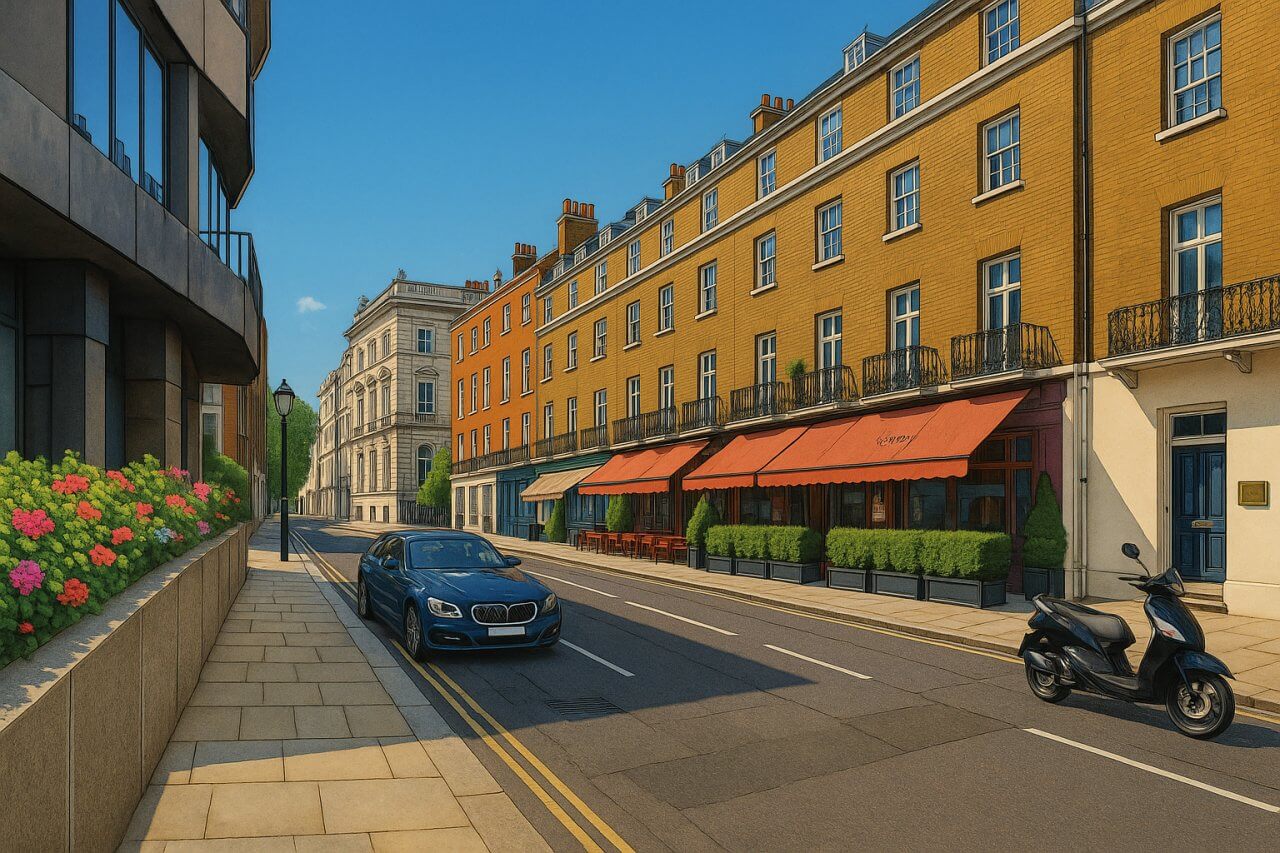
William Street, London
William Street is a quiet, pedestrianised road located in the exclusive neighbourhood of Knightsbridge, within the Royal Borough of Kensington and Chelsea. Though modest in length, this elegantly paved street offers a charming and upmarket passageway between the bustling Knightsbridge thoroughfare and the residential calm of Lowndes Square. It is a route primarily designed for foot traffic, with only bicycles and authorised vehicles permitted entry.
Overview and Location
William Street runs roughly west to east, beginning at Knightsbridge and terminating at Lowndes Square. The street is approximately 110 metres (about 360 feet) in length. Traffic is one-way—or rather, pedestrian-only for the majority of use—and while the entry from Knightsbridge is restricted to non-motorised or authorised vehicles, it functions smoothly as a peaceful urban walkway amidst the busy surroundings.
Historical Background
William Street is thought to have been laid out during the mid-19th century as part of the wider development of Knightsbridge and Belgravia, both of which were experiencing rapid growth in response to London’s expanding upper and upper-middle classes. Though exact construction dates are not easily pinned down, William Street appears on London maps by the 1870s.
The name "William Street" is believed to honour Prince William, Duke of Clarence, who later became King William IV of the United Kingdom (reigned 1830–1837). The pronunciation of William is standard: WILL-yum and in the International Phonetic Alphabet, it is rendered as /ˈwɪl.jəm/. 
Street Character and Ambience
Today, William Street is best characterised by its elegant calm. With no retail shops or heavy vehicle traffic, the atmosphere is almost entirely residential, with well-maintained pavements and subtle landscaping. The buildings flanking the street reflect a mix of early Victorian townhouses and later 20th-century developments, many of which have been converted into high-end apartments or remain single-family homes.
Though understated, the street forms part of a highly desirable neighbourhood and retains a discreet charm. The absence of retail signage and road noise gives it a secluded feel, despite being mere steps from one of London’s busiest shopping districts.
Points of Interest Nearby
- Harrods: Just a 5-minute walk away, this iconic department store needs little introduction. Its luxury shopping and food halls draw millions annually.
- Hyde Park: One of London’s largest green spaces, perfect for walking, boating, and events, located just north of Knightsbridge.
- Lowndes Square: At the eastern end of William Street, this quiet residential square offers tranquil garden views and a sense of old-money prestige.
- Embassy Quarter: Several embassies and diplomatic residences are located nearby, especially in Belgravia.
Real Estate on William Street
As of early 2025, property prices on William Street reflect the exclusivity of the surrounding Knightsbridge area. A typical apartment here may cost between £1.6 million to £3 million, with larger maisonettes or townhouses commanding significantly more. On average, properties range in size from 800 to 2,200 square feet (approximately 74 to 204 square metres).
Compared to the London average—hovering around £523,000 for flats in early 2025—William Street lies comfortably within the city’s top 5% most expensive areas1. The demand is driven by the area's security, elegance, and proximity to premium shopping and cultural venues.
Transport Links
Nearest Underground Stations
- Knightsbridge Station (Piccadilly line): Approximately a 3-minute walk. This station provides direct access to Heathrow Airport and central London stops such as Piccadilly Circus and Covent Garden.
- Hyde Park Corner Station (Piccadilly line): Around 10 minutes' walk westwards, useful for visitors staying in the Mayfair area.
Bus Stops Nearby
The closest bus stops are located directly on Knightsbridge, just a few metres from William Street. Frequent services include:
- Bus 9: Aldwych to Hammersmith
- Bus 10: King’s Cross to Hammersmith (day service)
- Bus 52: Victoria to Willesden
These services ensure easy access to major transport hubs, including Victoria Station and Paddington Station.
Fun Fact
Despite its short length, William Street has made a number of appearances in literature and cinema as a backdrop for scenes set in “upper-class London.” Its genteel appearance and proximity to Harrods make it an ideal location for producers looking to capture the visual tone of quiet affluence.
Quick Facts
- Location: Knightsbridge, Royal Borough of Kensington and Chelsea
- Length: Approximately 110 metres (360 feet)
- Traffic: Pedestrianised; only bicycles and authorised vehicles permitted
- Nearest Tube Station: Knightsbridge (Piccadilly line)
- Nearby Sights: Harrods, Hyde Park, Lowndes Square
- Average Property Prices: £1.6M–£3M (as of early 2025)
- Property Sizes: 800–2,200 sq ft (74–204 sq m)
- Pronunciation: /ˈwɪl.jəm/ (“WILL-yum”)
- Nearby Bus Routes: 9, 10, 52
- Historical Note: Named likely after King William IV, street appears on 1870s maps
References
Map of William Street, London

Painting of William Street, London (View image in full size)